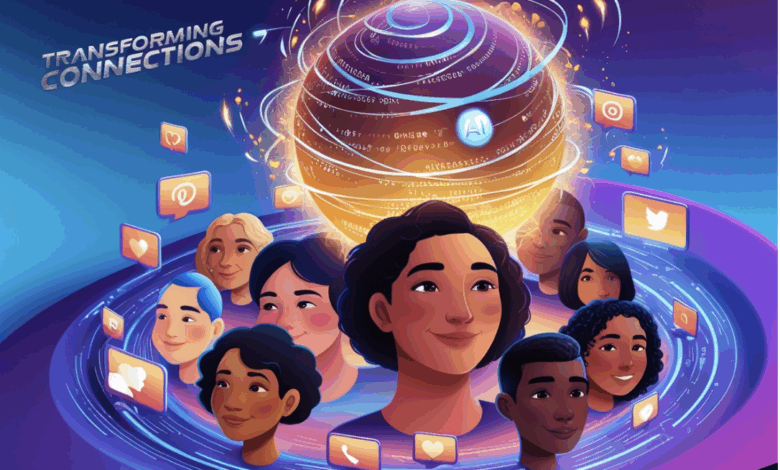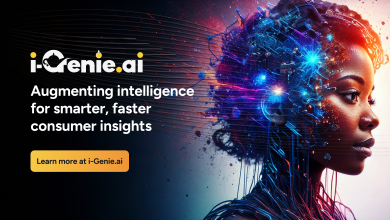
Artificial intelligence is no longer just a background technology. It’s now deeply bedded in the way people connect, communicate, and form connections online. Social media platforms have embraced AI to a position where it influences what users see, how they engage, and indeed the tone of their relations. Whether it’s detecting sentiment, curating content, or helping advertisers reach the right audience, AI is still reshaping the digital social fabric.
This metamorphosis isn’t a fleeting trend but a long-term elaboration driven by data, robotisation, and substantiated guesses. Understanding this shift is pivotal for businesses, marketers, and users who calculate on social media for connection and communication.
AI-Powered Content Curation
One of the first ways AI impacts users commerce is through substantiated content delivery. Algorithms cover users gestures, preferences, time spent on posts, and scrolling patterns. Grounded on this information, the platform predicts what kind of content will engage the users most and presents it on their feed.
For illustration, if a users frequently engages with motivational quotations or short vids, the AI behind the platform ensures further of this content shells at the top of the feed. This personalisation enhances the users experience, increases session duration, and creates a deeper emotional bond between the users and the content.
Still, this also means users are frequently shown a filtered interpretation of reality. Echo chambers can form, where people only see views analogous to their own. While this can ameliorate short-term engagement, it may limit exposure to different opinions in the long run. Thus, responsible AI use is essential for maintaining balanced content inflow.
Emotional Analysis and Sentiment Tracking
AI doesn’t just understand what users are looking at. It understands how they feel about it. Using natural language processing (NLP), social platforms dissect the tone, emotion, and sentiment behind posts and commentary. This capability has several real-world operations.
- For a case, brands frequently use AI tools to measure how people feel about their juggernauts or products.
- By assaying public sentiment, companies can acclimate messaging in real-time.
- It also helps in relating implicit PR heads before they go viral.
- Platforms use sentiment analysis to protect users from cyberbullying, detest speech, and importunity.
- By flagging dangerous content beforehand, AI ensures safer relations and supports internal well-being in online communities.
Smarter Chatbots and Virtual Sidekicks
Social media client service has taken a vault forward with AI-powered chatbots. Rather than staying for a mortal agent, users get instant responses to their queries. These bots:
- Understand natural language
- Handle multiple relations contemporaneously
- Learn from past exchanges to ameliorate future responses.
For illustration, when a client dispatches a brand’s Facebook runner asking about product vacuity, an AI chatbot can incontinently respond with the correct information, check force, and indeed give druthers. This increases satisfaction, reduces response time, and allows brands to maintain 24/7 vacuity.
These chatbots also support voice integration and multilingual capabilities, helping brands feed a wider audience. Whether it’s an incipiency or a transnational pot, integrating AI-driven communication tools has become essential for managing client connections online.
Swaying Purchase Opinions and Announcement Targeting
AI doesn’t just impact organic content. It plays a major part in how announcements are designed and delivered. Every commerce, click, or scroll is data that helps AI make a users profile. This profile determines:
- Which advertisements appear
- When they appear
- How frequently they’re shown
For advertisers, platforms like Meta have introduced tools that enable precise targeting. Using AI, businesses can produce announcement juggernauts that speak directly to users requirements and gestures.
A crucial part of this process is erecting largely acclimatised audience parts. This is where platforms like the custom audience platform for your Meta ads come into play. These platforms allow businesses to:
- Integrate AI-driven perceptivity
- Dissect users relations
- Retarget cult grounded on real-time gestures
It’s a game-changer for advertisers looking to increase ROI, reduce wasted spend, and epitomise juggernauts at scale.
AI in Video and Image Recognition
Visual content dominates social media. AI has enhanced how platforms dissect and respond to images and videos.
- Instagram uses AI to fete objects in prints, understand themes, and suggest applicable hashtags.
- This helps users get further visibility and reach.
- Generators also profit from bus captioning, visual liar tools, and background improvement features powered by machine literacy.
- Platforms like TikTok and YouTube use AI to prognosticate which vids a users is likely to enjoy, grounded on:
- Watch time
- Renewals
- Relations
These algorithms ensure high retention, turning unresistant users into active communities.
Case Study: How AI Boosted users Engagement on LinkedIn
LinkedIn integrated AI to ameliorate:
- users suggestions
- Post applicability
- Job recommendations
Results:
- A/B testing showed users who were served AI-curated feeds spent 15 further time on the platform.
- 25% increase in meaningful relations
- Job campaigners set up more applicable openings.
- Babe saw advanced-quality campaigners
This success stemmed from LinkedIn’s use of AI models trained on millions of data points, including chops, signatures, job titles, and connection patterns. By understanding both professional intent and content preferences, LinkedIn created a space where users felt more seen, heard, and connected.
Case Study: Small Business Advertising with Custom Audience Targeting
A small fashion retailer wanted to launch a crusade on Meta. Rather than using broad targeting, they decided on a more refined strategy using the custom audience platform for your Meta advertisements.
Approach:
- Assaying users data such as once purchases, website visits, and social relations
- Platform helped make a custom audience profile.
Results:
- Within the first week, announcement engagement increased by 40%.
- Conversion rates doubled
- Business saved on announcement spend
- Created stronger connections with guests who resonated with their brand communication
This shows how, indeed, small businesses can work AI and custom audience tools to achieve significant marketing success.
Structure Ethical AI for Social Media
With all these advancements, it’s important to note the responsibility that comes with AI operation. Key areas of focus:
- Data sequestration
- Translucency
- Ethical design
users should:
- Be informed about how their data is used
- Have control over what content they admit
Several platforms are now fastening on resolvable AI models. These systems are designed to offer translucency in decision-making processes, helping users understand why certain content is prioritised over others.
By aligning AI development with ethical guidelines, social media platforms can make lasting trust while continuing to introduce. The continuous drive for innovation, guided by ethical principles, can empower users with tools that genuinely enhance their reach and engagement. This commitment to user success is vital, especially for creators seeking effective strategies for SocialBoosting TikTok views within the platform’s guidelines.
Final Studies
AI isn’t just transubstantiating social media. It’s reconsidering how people interact, form connections, and engage with digital content. From substantiated feeds to advanced audience targeting, AI has made social media smarter, brisker, and more mortal-like.
For users, this means:
- Richer guests
- Safer spaces
For businesses and generators, it offers:
- Tools that can help grow cult
- Ameliorate communication
- Drive results
Platforms that embrace responsible and users-centric AI development are likely to lead t his metamorphosis in the times to come.





